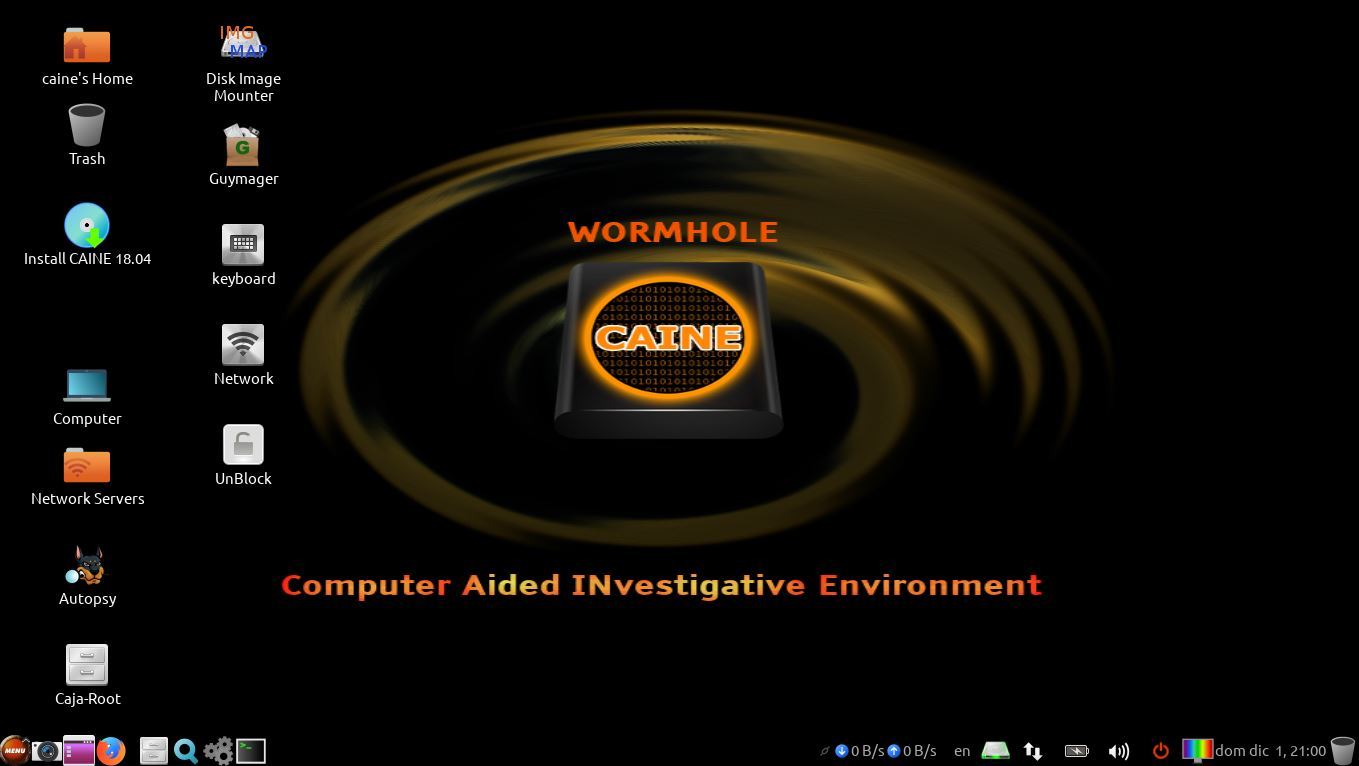CAINE Forensic Environment
Last Updated :
02 Jun, 2020
CAINE Linux stands for Computer Aided Investigative Environment. It is an Italian Linux live distribution, a digital forensics project that was started in 2008. It uses an old-school desktop environment complemented with top-notch specialty tools.
In this article, we will discuss the following topics:
- What is CAINE?
- What is the Purpose behind the Introduction of CAINE?
- What are the Pre-requisites for getting started with CAINE?
- What are the supported platforms
- CAINE Look and Feel.
- Major Forensic Tools.

Let’s get started and discuss each topic in detail.
What is CAINE?
CAINE (Computer Aided Investigative Environment? provides tight security and built-in forensic investigation tools. CAINE is built around a complete investigative environment that is organized to integrate existing software tools as software modules and to provide a friendly graphical user interface. Currently, the project manager of CAINE Linux is Nanni Bassetti (Bari – Italy).
What is the Purpose behind the Introduction of CAINE?
The main objectives that CAINE aims to guarantee are the following:
- Its operation environment is designed to provide all the forensic tools that are required to perform digital forensic investigative processes like preservation, collection, examination, and analysis.
- It provides a user-friendly graphical user interface with user -friendly forensic tools.
- It can be booted from the removable media like flash drives or from an optical disk and run in memory.
- It can be easily installed onto a physical or a virtual system.
- In LIVE mode, CAINE can operate on data storage objects without having to boot up the operating system.
What are the Pre-requisites for getting started with CAINE?
In this section, we will have a look at some of the system requirements to get started with CAINE.
- Since CAINE is based on Ubuntu 16.04 64-bit, using Linux Kernel 4.4.0-97, if you want to run CAINE as a live disc then CAINE system requirements are similar to Ubuntu 16.04.
- 2GHz dual-core processor or better.
- 2GB system memory.
- It can run on a physical system or a virtual environment like VMWare Workstation.
What are the supported platforms?
CAINE Linux has several software applications, libraries, and scripts that can be used in a command-line or graphical environment to perform forensic activities. It can perform data analysis on the data objects created on Microsoft Windows, Linux, and some Unix Systems. One of the interesting features of CAINE Linux version 9.0 is that it sets all the block devices to read-only mode by default.
CAINE Look and Feel
In this section, we will drive you through the Look and Feel of the CAINE Linux in GUI Mode.
- CAINE Linux uses only the MATE desktop environment, which is a fork of the GNOME 2 desktop environment.
- MATE keeps the no-frills and no-nonsense user interface of the pre-GNOME 3 upgrade, thus a good choice for a fast and reliable desktop.
- The CAINE and MATE combination leads to the smooth interface and straightforward desktop.
- The default setting of full panel bar transparency blends right into the desktop’s background.
- Application icons can be easily pinned to the panel or desktop for quick launch.
- You can add the virtual workplace switcher applet to the dock for easy point-and-switch access.
Major Forensic Tools
CAINE Linux provides a variety of software tools that can be used for memory, database, network, and forensic analysis. The File Image System analysis of File Systems like FAT/ExFAT, NTFS, Ext2, Ext3, HFS, and ISO 9660 is possible using command-line mode as well as Graphical user interface mode. CAINE Linux support disk imaging in raw(dd) and expert witness/ advanced file format also. Disk images may be obtained using the tools that built-in the CAINE or using third-party tools like EnCase, or Forensic Tool Kit.
Here is the list of some of the tools that are included with CAINE Linux:
- Autopsy: This is an open-source digital forensics tool that supports :
- Forensic analysis of Files.
- Hash Filtering.
- Analysis of Email and Web Artifacts.
- Keyword Search.
An autopsy is simply the graphical user interface to The Sleuth Kit.
- The Sleuth Kit: This is an open-source command-line tool that supports the forensic inspection of file systems and disk volumes.
- Wireshark: This is a digital forensics tool that supports non-real-time analysis of data packet captures(*.pcap) and interactive collection of network traffic.
- PhotoRec: This tool supports recovery of lost files from hard disk, optical media, and digital camera.
- Fsstat: This tool displays file system statistical information about an image or storage object.
- RegRipper: This is an open-source tool that is written in Perl and extracts/parses information like keys, values, data, etc. from the Registry database for data analysis.
- Tinfoleak: This is an open-source tool for collecting detailed Twitter intelligence analysis.
References– https://www.caine-live.net/
Like Article
Suggest improvement
Share your thoughts in the comments
Please Login to comment...